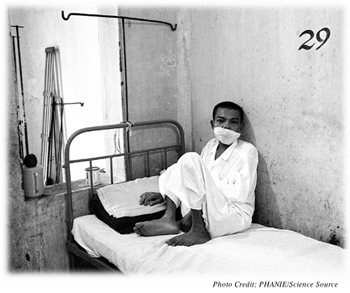
Chapter 1. HIV/AIDS
Synopsis
HIV/AIDS
Author

Michelle Ryder, Daniel Webster College
Pauline Davey Zeece, University of Nebraska - Lincoln
Synopsis
This activity provides an introduction to, history on, and statistics for HIV and AIDS, which is a worldwide epidemic. While there has been a significant amount of research on HIV/AIDS and possible treatments, diagnoses of AIDS are still on the rise. Videos will explore more closely how this epidemic affects people in Sri Lanka and Pakistan.
REFERENCES
amfAR (2007). Thirty years of HIV/AIDS: Snapshots of an epidemic. Retrieved June 11, 2013, from http://www.amfar.org/content.aspx?id=3598&terms=Snapshots%20of%20an%20epidemic
Asia and the Pacific – AIDS epidemic facts and figures: Regional Fact Sheet 2012. Retrieved June 24, 2013, from http://www.unaids.org/en/resources/presscentre/factsheets/
Centers for Disease Control and Prevention (2013). HIV Among Youth. Retrieved June 17, 2013, from http://www.cdc.gov/hiv/risk/age/youth/index.html
CIA (2007). CIA World Factbook-Sri Lanka. Retrieved June 18, 2013 from https://www.cia.gov/library/publications/the-world-factbook/geos/ce.html
CNN (2013). Thirty Years of AIDS Moment to Remember. Retrieved June 15, 2013 from http://www.cnn.com/2011/HEALTH/05/25/aids.timeline/index.html
Coffin, J., Haase, A., Levy, J., Montagnier, L., Oroszlan, S., Teich, N., Temin, H., Toyoshima, K., Varmus, H., & Vogt, P. (1986). What to call the AIDS virus? Nature, 321(6065), 10.
http://aids.gov
http://www.aidsonline.org
http://www.amfar.org
http://www.streetchildren.org.uk/
http://www.unaids.org
http://www.worldbank.org
Popovick, M., Sarngadharan, M., Read, E., & Gallo, R. (1984). Detection, isolation, and continuous production of cytopathic retrovirus (HTLV-III) from patients with AIDS and pre-AIDS. Science, 224(4648), 497-500.
The World Bank (July 10, 2012). HIV/AIDS in Sri Lanka. Retrieved June 13, 2013 from http://www.worldbank.org/en/news/feature/2012/07/10/hiv-aids-sri-lanka
The World Bank. Sri Lanka. Retrieved June 11, 2013 from http://www.worldbank.org/en/country/srilanka
UNAIDS. Search for “Stigma and Discrimination.” Retrieved May 16, 2007, from http://www.unaids.org
US Department of State (2013). Country Report on Human Rights Practices for 2012 for Sri Lanka. Retrieved June 24, 2013, from
http://www.state.gov/j/drl/rls/hrrpt/humanrightsreport/index.htm?year=2012&dlid=204411
What is AIDS?
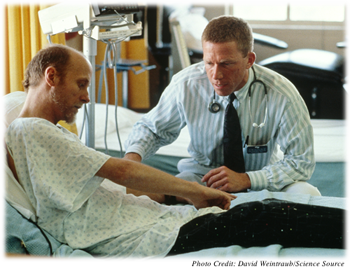
AIDS (acquired immunodeficiency syndrome) is a separate diagnosis from HIV (human immunodeficiency virus) because AIDS represents an advanced stage of HIV infection in which the immune system is extremely compromised making the patient very vulnerable to various infections. HIV is the virus that causes AIDS and is transmitted from person to person through the direct exchange of body fluids such as, blood, semen, vaginal secretions, and breast milk. Any of these infected fluids have to enter the bloodstream of another person in order for the HIV virus to be transferred. The transmission of the virus is most publicly associated with unprotected vaginal or anal sexual intercourse, but unprotected oral sex does pose a risk of infection. HIV can also be transmitted by receiving a blood transfusion of infected blood or by sharing a hypodermic needle with an infected person. The virus can also be passed from mother to child during pregnancy, childbirth, and/or breastfeeding.
Some History on HIV and AIDS
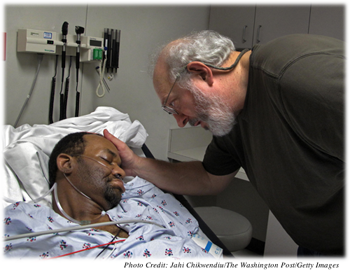
On June 5, 1981, Dr. Michael Gottlieb and colleagues from the Centers for Disease Control and Prevention (CDC) reported in the Morbidity and Mortality Weekly Report five cases of Pneumocystis carinii pneumonia, otherwise known as (PCP). PCP is a rare form of pneumonia that is usually only found in severely immune-compromised patients. Since these first five patients happened to be gay men and subsequent cases of this rare pneumonia along with other diseases resulting from immunosuppression appeared in gay men as well, an initial term used to describe this condition was “gay-related immune deficiency (GRID).” The media and others mistakenly proposed an inherent link between homosexuality and this new condition of extreme immune deficiency. Although this disease was assigned the name of AIDS (acquired immunodeficiency syndrome) in 1982, the GRID misnomer launched the beginning of decades of worldwide misunderstanding of, discrimination toward, and even violence against those with AIDS.
In 1984, scientists discovered the virus that causes AIDS. The virus was subsequently named the HIV virus, which stands for human immunodeficiency virus. In 1985, a test for HIV was approved by the Food and Drug Administration.
Some Statistics on HIV and AIDS

As of 2011, 34 million adults and children are living with HIV worldwide versus 29.4 million adults and children living with HIV in 2001. Just over 3 million of those infected are under the age of 15. Sub-Saharan Africa accounts for 69 percent of all the people and 91 percent of all the children living with HIV. In 2011, 1.7 million individuals died from AIDS . That figure contributes to the nearly 30 million who have died from HIV-related causes since the beginning of the AIDS epidemic.
Adolescents and AIDS
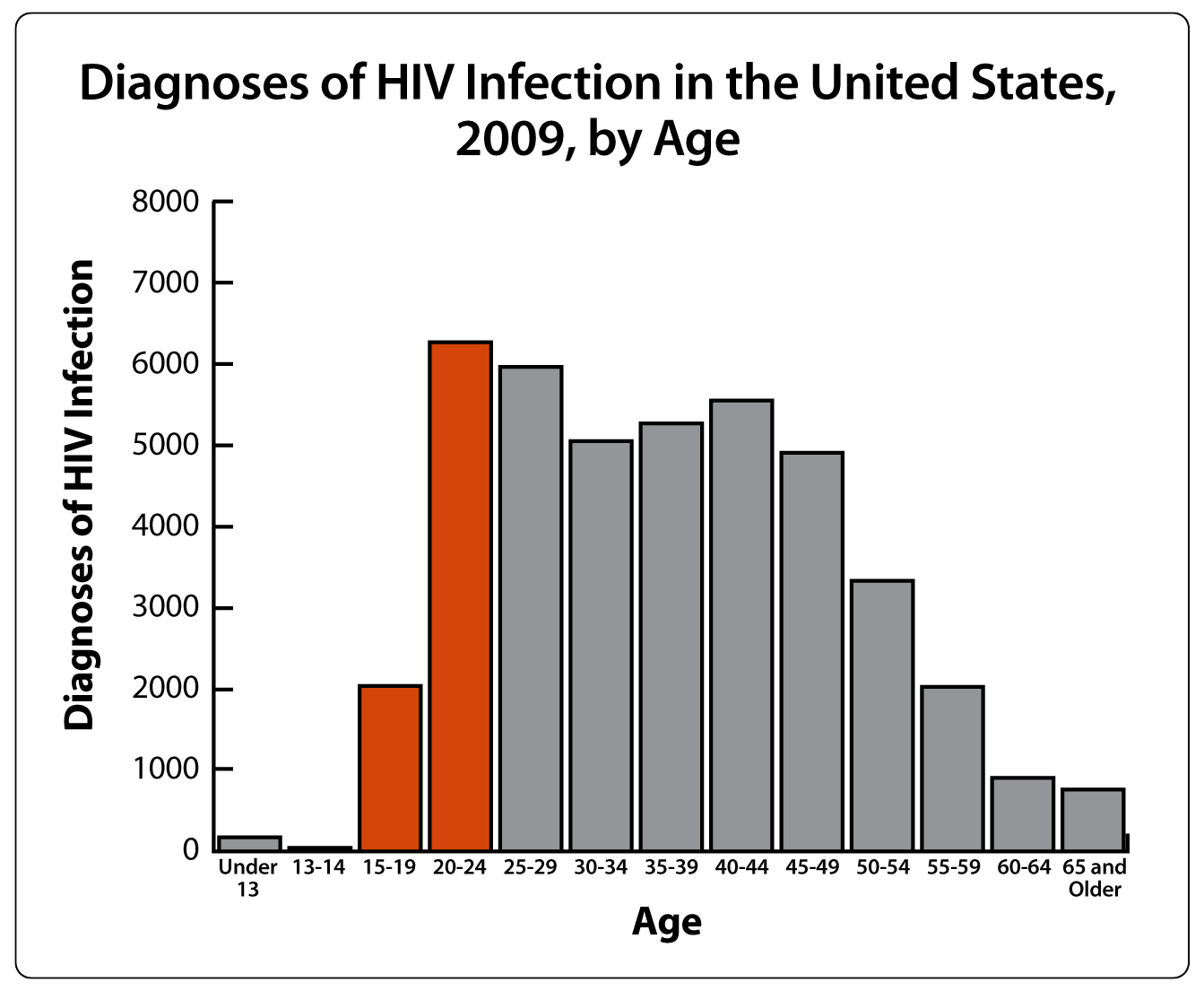
In the U.S., teens and young adults between the ages of 13 and 29 are at a growing risk for getting infected with HIV. In 2009, these adolescents accounted for 39 percent of all new HIV infections while they only represented 21 percent of U.S. population. The lists sexual behaviors, substance use, and lack of awareness as risk factors for adolescents and young adults to get infected with HIV. Today’s U.S. teens are having sexual intercourse, often unprotected, at an earlier age. Young men having sex with men, in particular, are one of the least likely populations to have been reached by outreach or intervention education. The Centers for Disease Control and Prevention (CDC) finds a correlation between substance abuse and high risk behaviors, such as unprotected sex. The lack of awareness that many adolescents suffer from includes not knowing their own HIV infection status, not knowing much about the transmission of HIV, not having access to educational resources about prevention and safe behaviors, and even not being particularly concerned about HIV because of their own adolescent egocentrism. Basically, being an adolescent in the U.S. today is risky business.
There is another group of teens who is part of the growing HIV statistics. They often do not have mp3 players, do not develop their ideas about sex and sexuality from movies and other media, and may not even have an adult in their life who knows or cares what they are doing. These are children on the streets of the world. They may engage in risky sexual activities as a means of survival or as part of their lives on the street. They may hide their activities and their infections because they live in societies that do not understand or discuss HIV or its means of transmission. They live in countries, such as Sri Lanka, that tie HIV to legally outlawed and socially unsanctioned homosexual behaviors and that thwart prevention and intervention efforts from health experts and agencies. This poses a critical challenge to the AIDS response in many countries around the world.
Case Study: AIDS in Sri Lanka
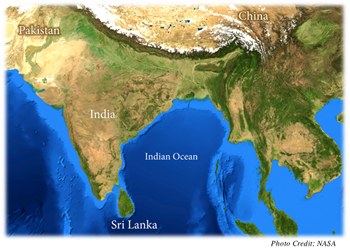
Sri Lanka is a constitutional, multiparty republic located off the southeastern coast of India with a population of just over 20 million people. Although the exact number of people living with HIV/AIDS in Sri Lanka is unknown, 2009 estimates have 2,800 Sri Lankans living with HIV. For a country of that size, these statistics alone appear to paint a fairly optimistic picture. However, underreporting of HIV cases is rampant in Sri Lanka considering the lack of public knowledge about how HIV is transmitted, the lack of resources for HIV screening, the tremendous discrimination toward people living with AIDS, and the strong stigma and laws against homosexual behavior. These factors along with a prominent sex industry create a breeding ground for an AIDS epidemic. According to a UNAIDS report from 2012, Sri Lanka has shown more than a 25 percent increase in the rate of HIV infections between 2001 and 2011 in spite of the growing global climate in favor of HIV/AIDS education and prevention.
Case Study: AIDS in Sri Lanka (continued)

In 2012, the World Bank published an article laying out some of the risk factors that make Sri Lanka particularly susceptible to an AIDS outbreak.
- Inconsistent condom use – For example, only 64 percent of men having sex with men, who are a very high-risk population, report using condoms.
- Prominent sex industry – In addition to 35,000 known female sex workers, there are supposed networks of men who have sex with men. These networks may incorporate women and prostitution. This population is extremely vulnerable to contracting HIV.
- Migrant workforce – Many Sri Lankans travel elsewhere for work. Just under half of this migrant workforce is women, and 86 percent of these women are unskilled. Statistically speaking, this transient pattern of working may be conducive to promiscuity, unsafe sexual practices, and potential prostitution or sexual abuse.
- Poor understanding of HIV – Many Sri Lankans are not properly informed about how HIV is transmitted and how to protect themselves.
- Prejudice toward individuals living with AIDS – Because there is such a stigma attached to having AIDS, many may not pursue getting informed, tested, or treated. Potentially, this prejudice may even affect the quality of health care available.
Play the video to listen to a young adult son from a family in Pakistan and then an adolescent girl from a family in Sri Lanka as they each recount the prejudice of community, government, and health care professionals toward their family members diagnosed with either HIV or AIDS.
1.
According to the video, what are some of the greatest difficulties these families face when a family member is infected with HIV or AIDS?
Fighting AIDS

The global AIDS epidemic is one of the greatest threats to development in the world. Recent figures reveal that over 60 million people have contracted HIV worldwide and that 30 million have died of HIV-related causes since this disease first appeared. Despite advances in treatment and prevention, the spread of the disease has outpaced even the worst-case scenarios predicted by researchers. The challenge of bridging the gap between the scientific research on HIV/AIDS and the real-world implications and devastation of this disease is still very much an active battle. For example, the use of anti-retroviral agents during pregnancy and labor may significantly reduce the risk of maternal-to-child transmission of HIV, but the real obstacle is that these anti-retroviral medications are not readily available in many countries, often the countries that need this medical assistance the most.
Steps are being taken to help the world community cope with HIV and AIDS. As an example, recent efforts in Sri Lanka include culturally sensitive and issue-specific programs in sexuality education, awareness-building to increase accurate understanding of HIV/AIDS-related issues and to generate positive and compassionate attitudes toward people with AIDS, and community- and regional-based services for people with HIV/AIDS. The hope is that interventions such as these can happen in many at-risk communities and that they will act to slow down the rate of infection on a global level.
Play the video to find out what some Sri Lankans, especially adolescents, think should be done to cope with AIDS in their families and communities.
Assessment: Check Your Understanding

2.
1. HIV and AIDS are different labels for the same disease.
Assessment: Check Your Understanding
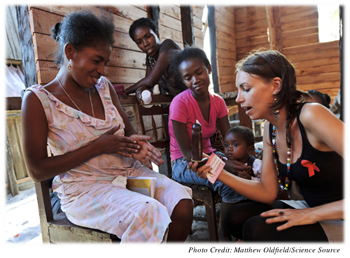
3.
2. Adolescent egocentrism helps young people to focus on themselves and practice safe sex.
Assessment: Check Your Understanding

4.
3. Which of the following is NOT one of the factors that contribute to an increase of HIV/AIDS in Sri Lanka?
Assessment: Check Your Understanding

5.
4. How do laws against homosexuality contribute to the spread of HIV/AIDS?
Congratulations! You have completed this activity.Total Score: x out of x points (x%) You have received a provisional score for your essay answers, which have been submitted to your instructor.